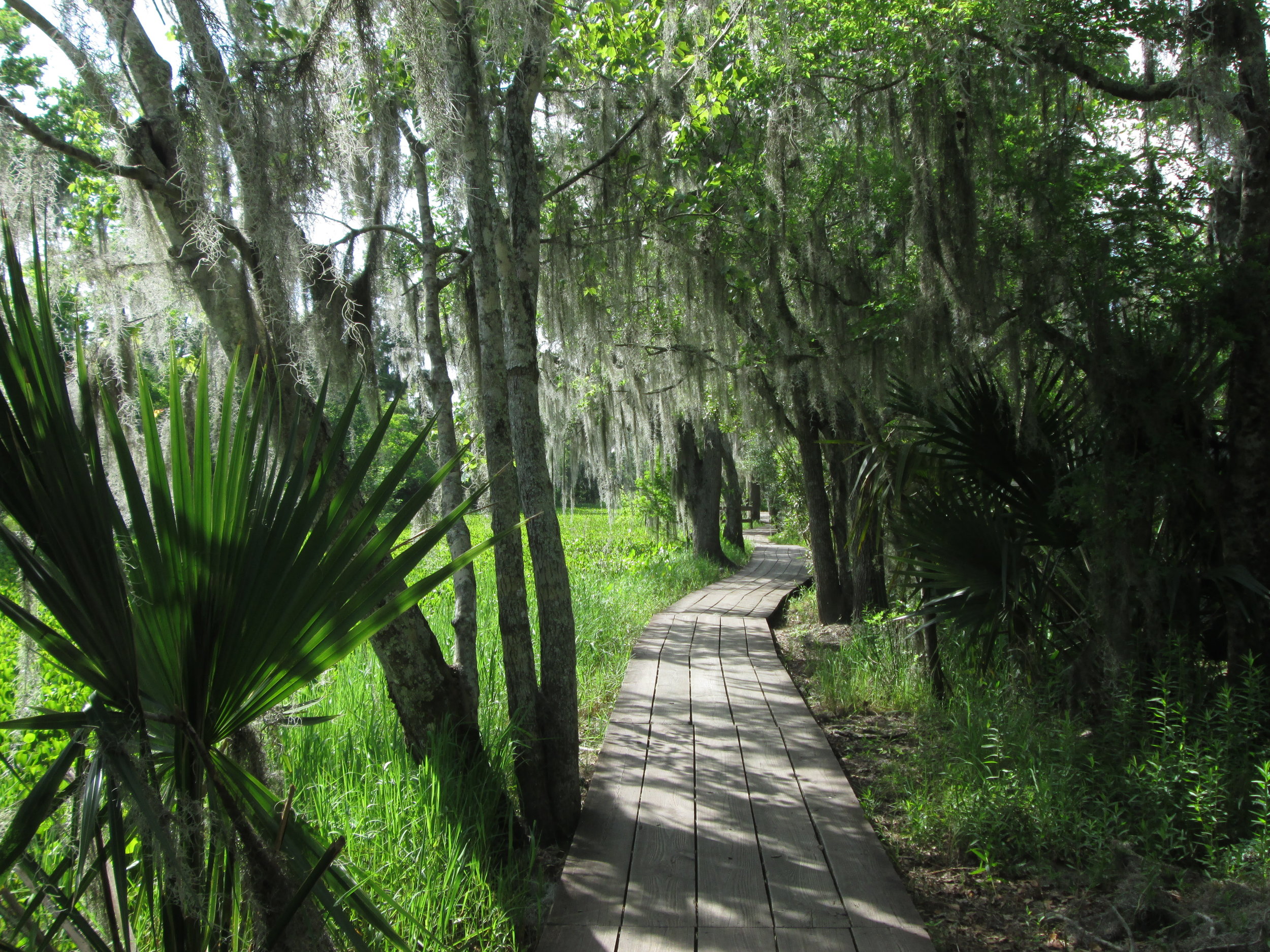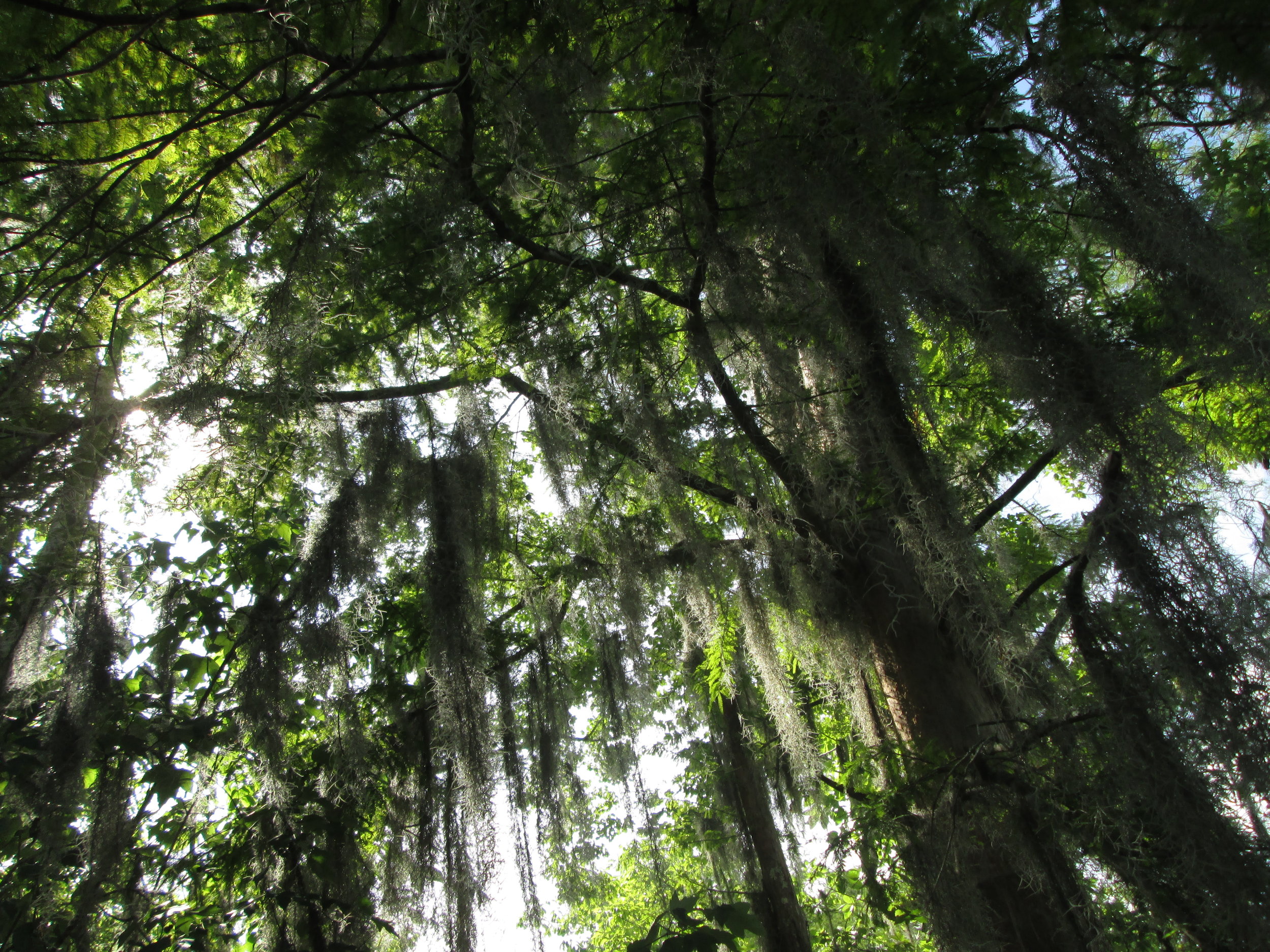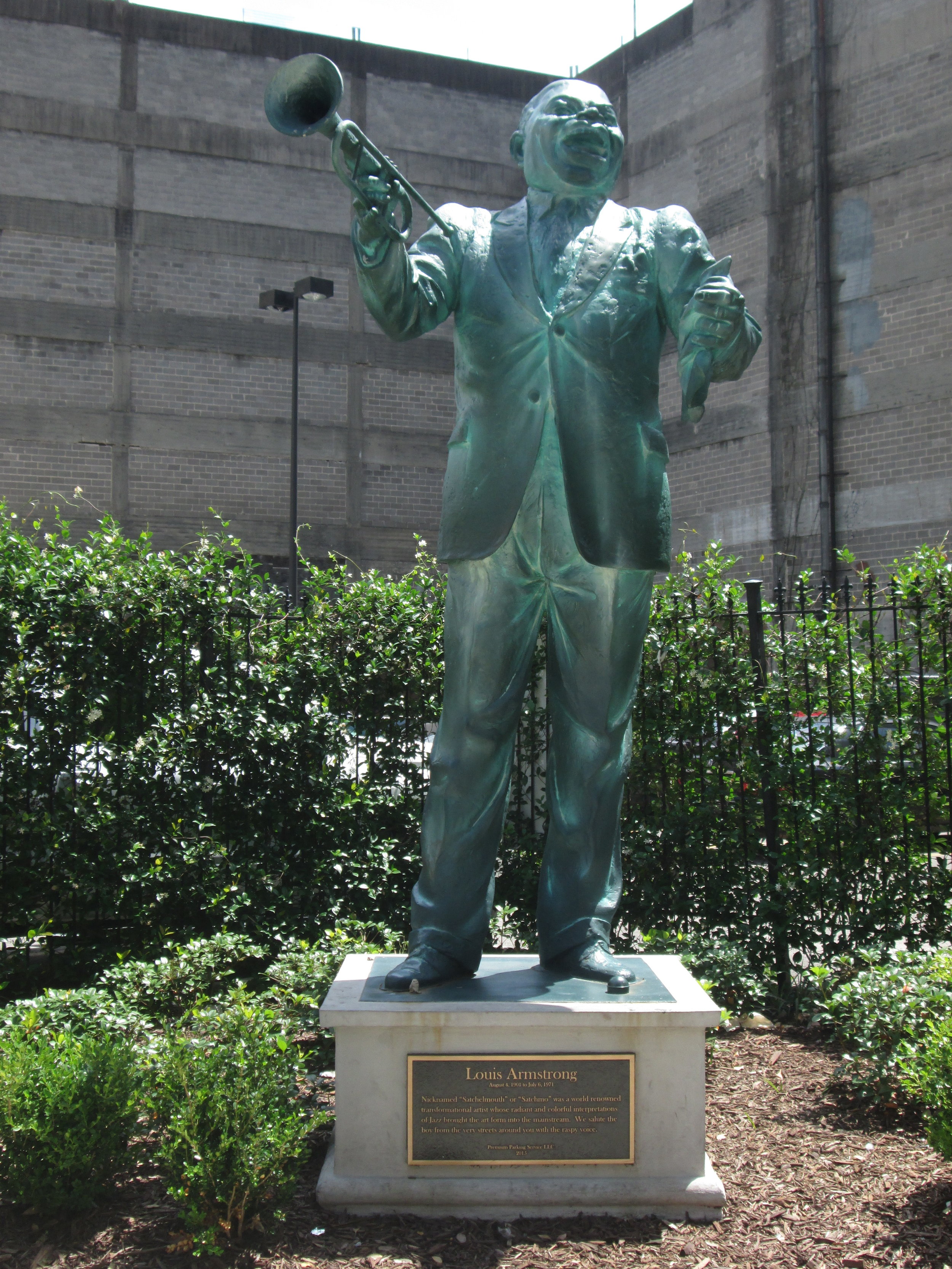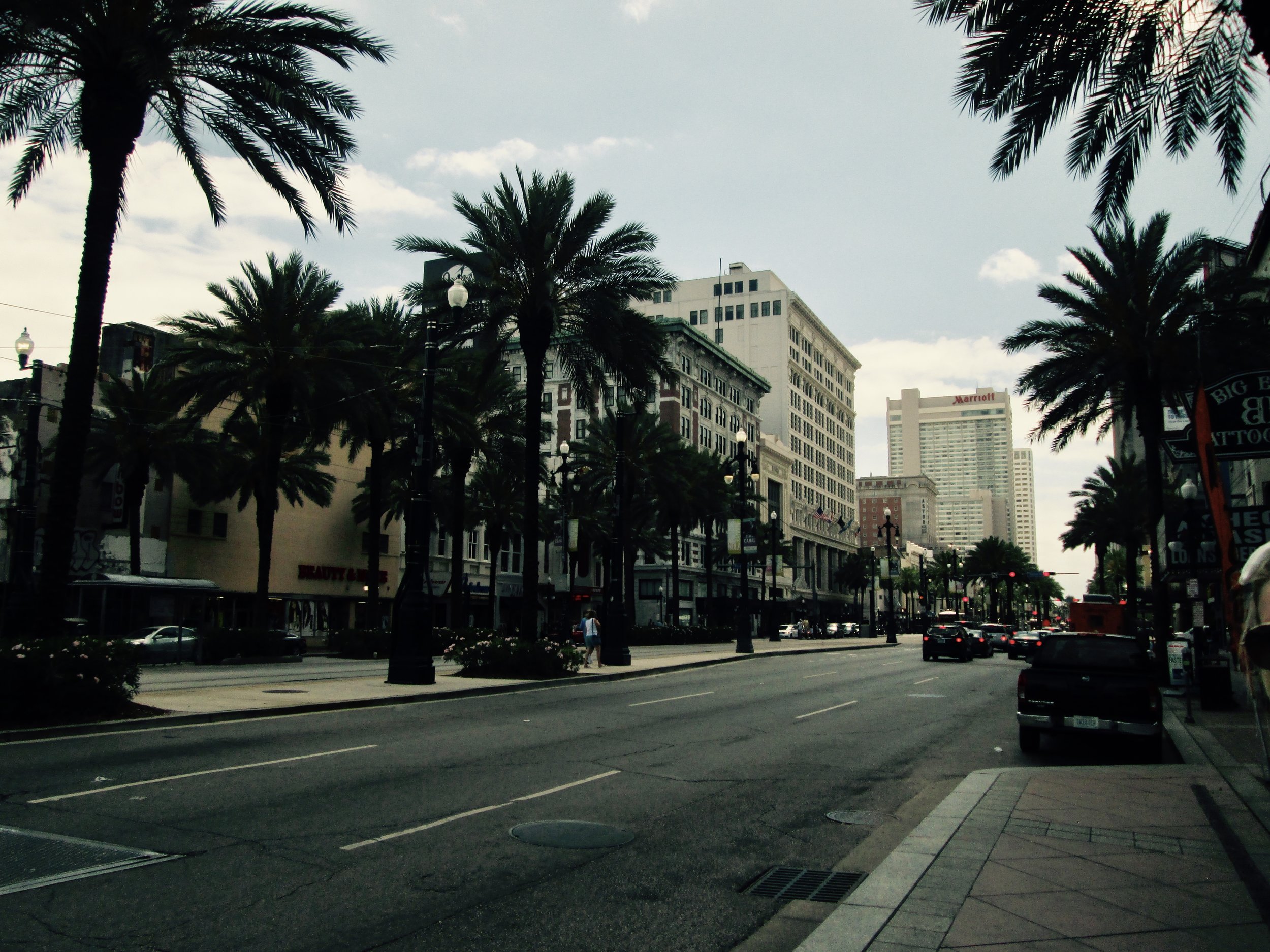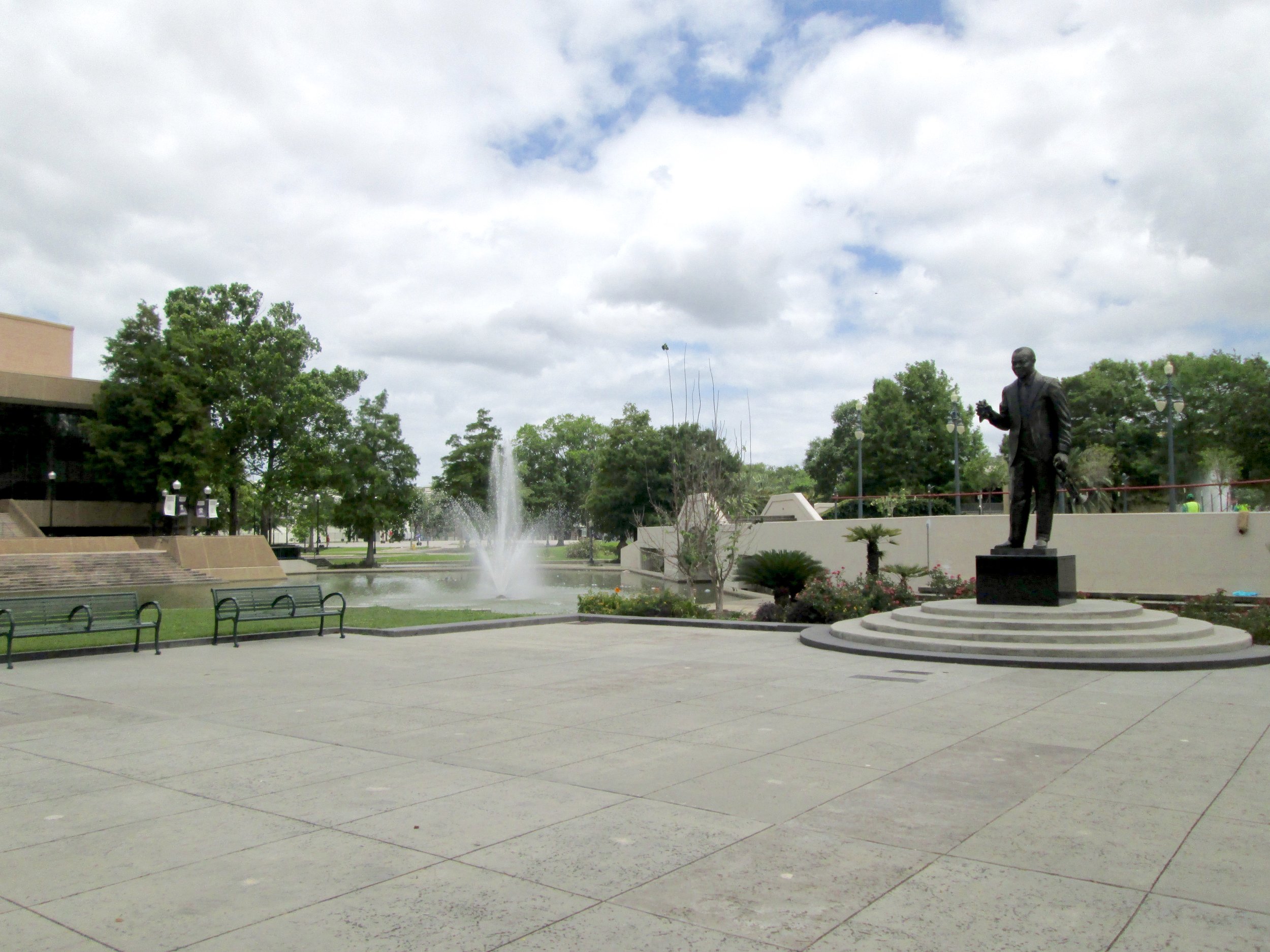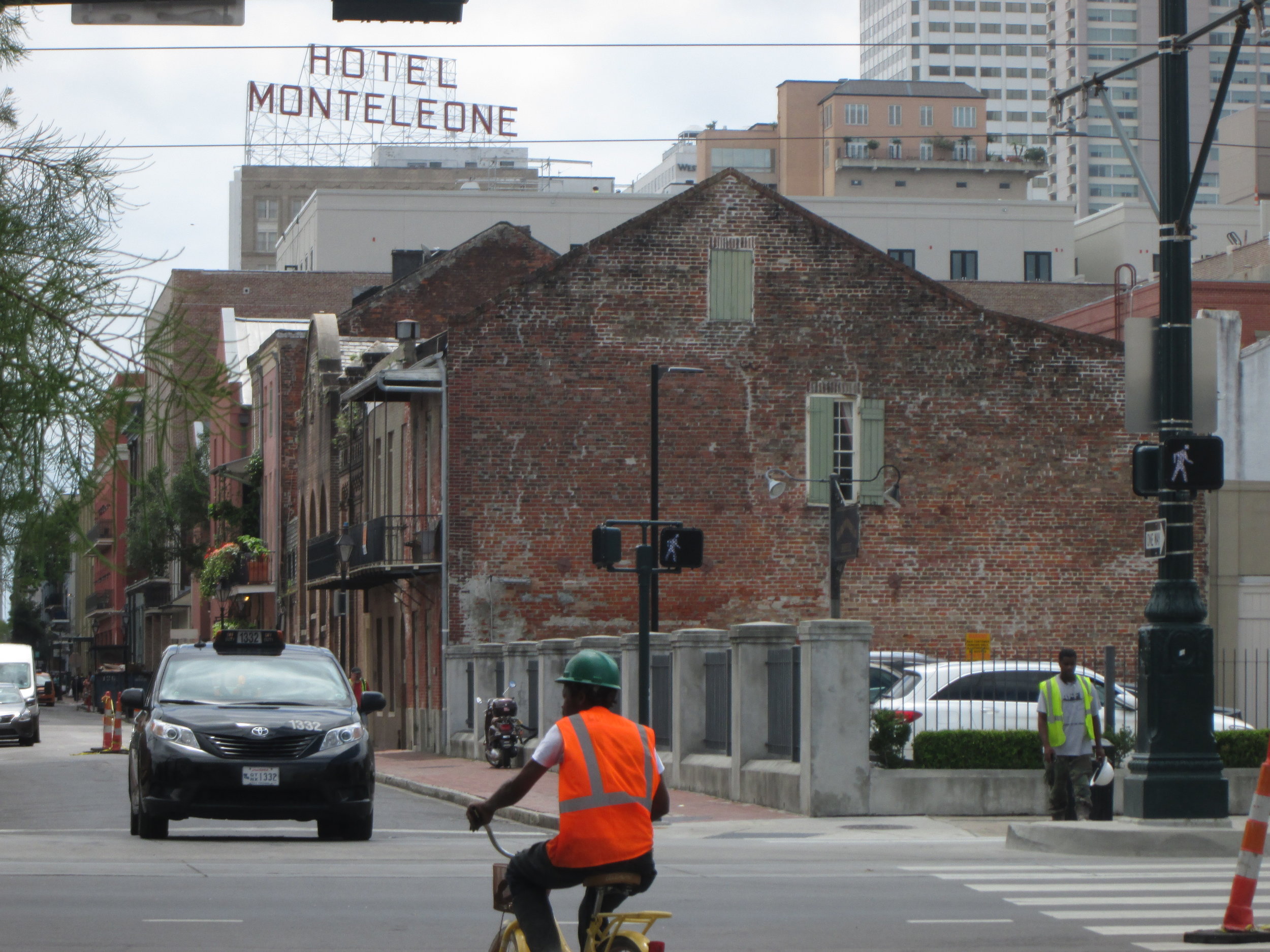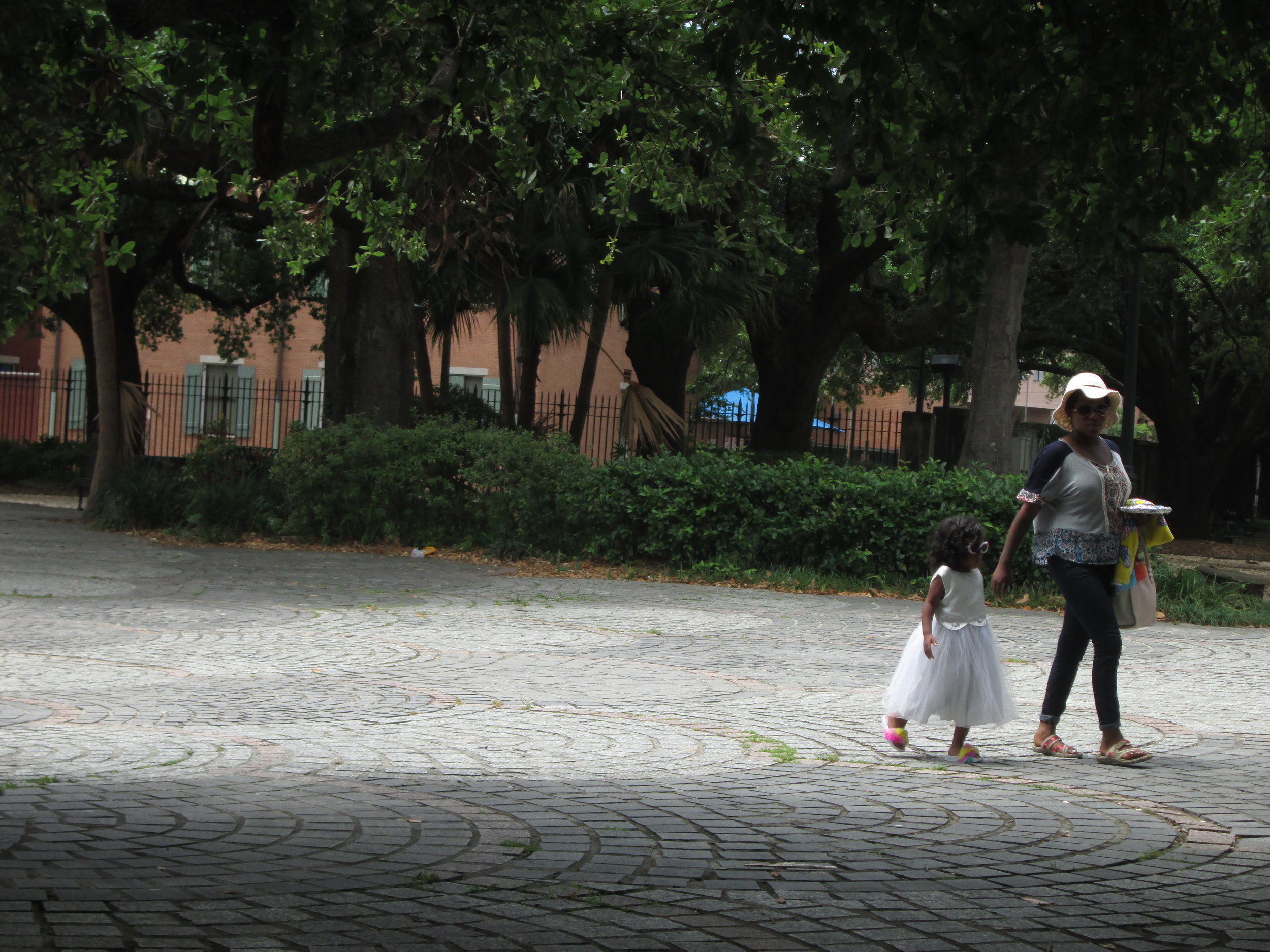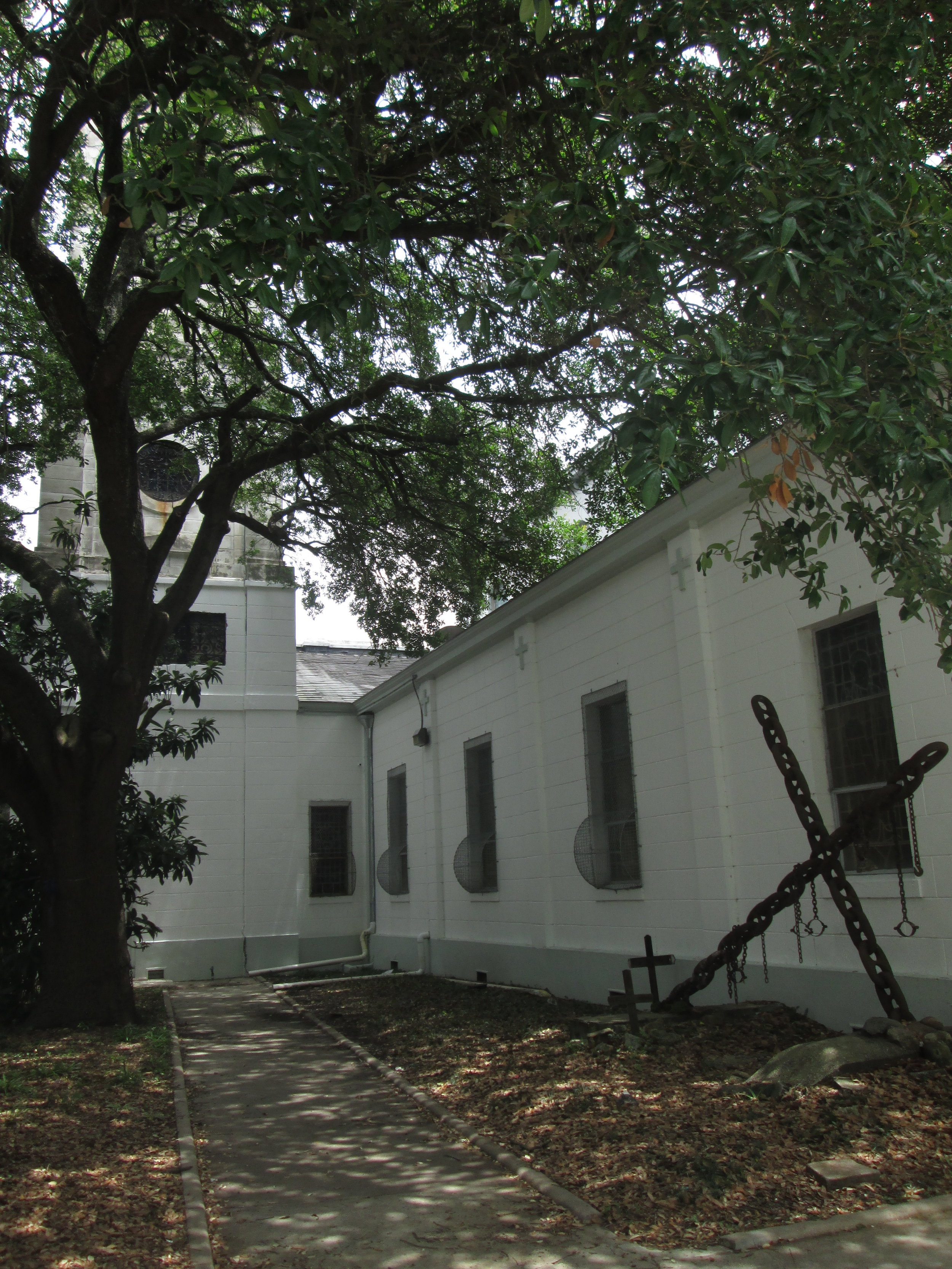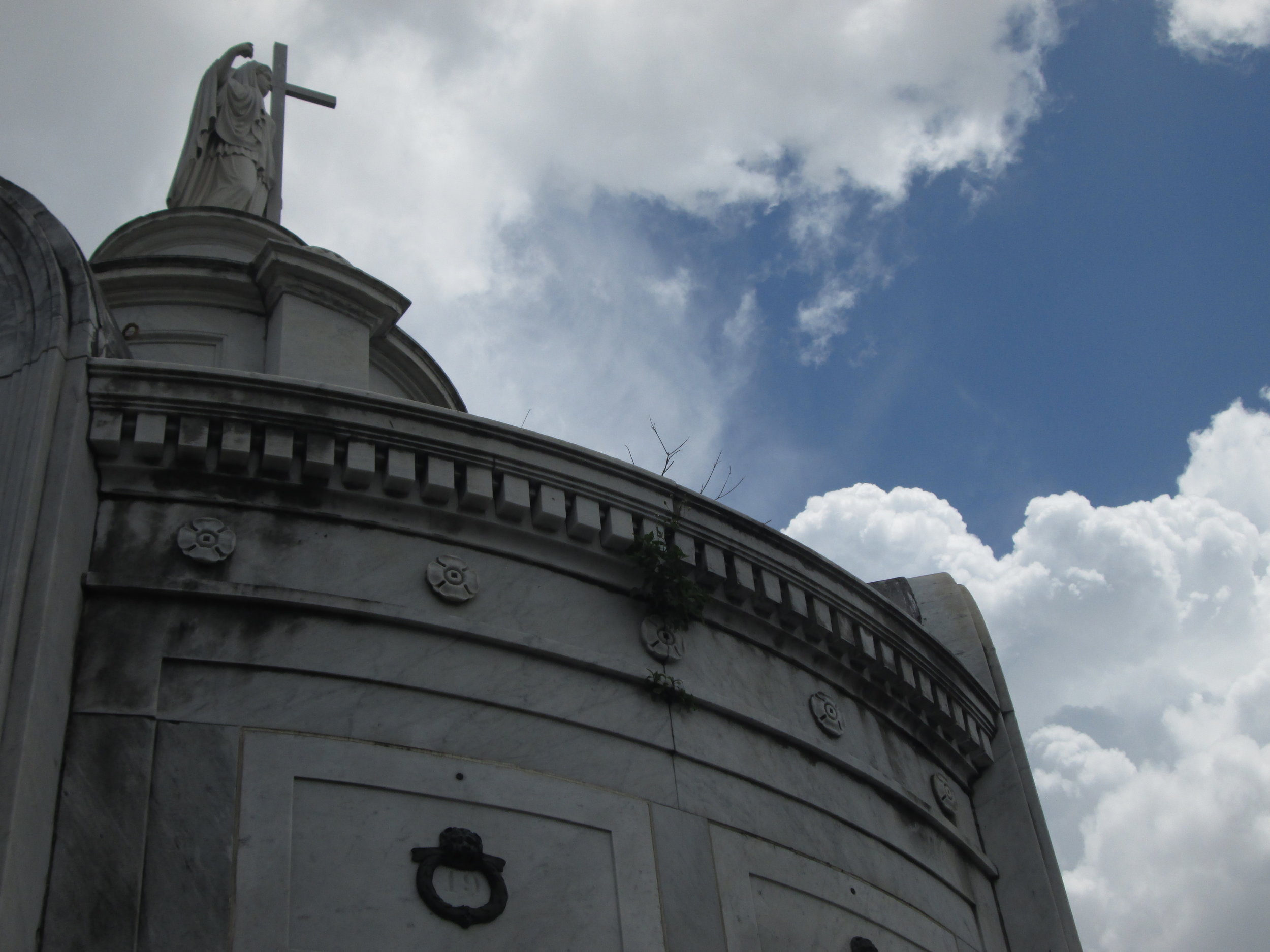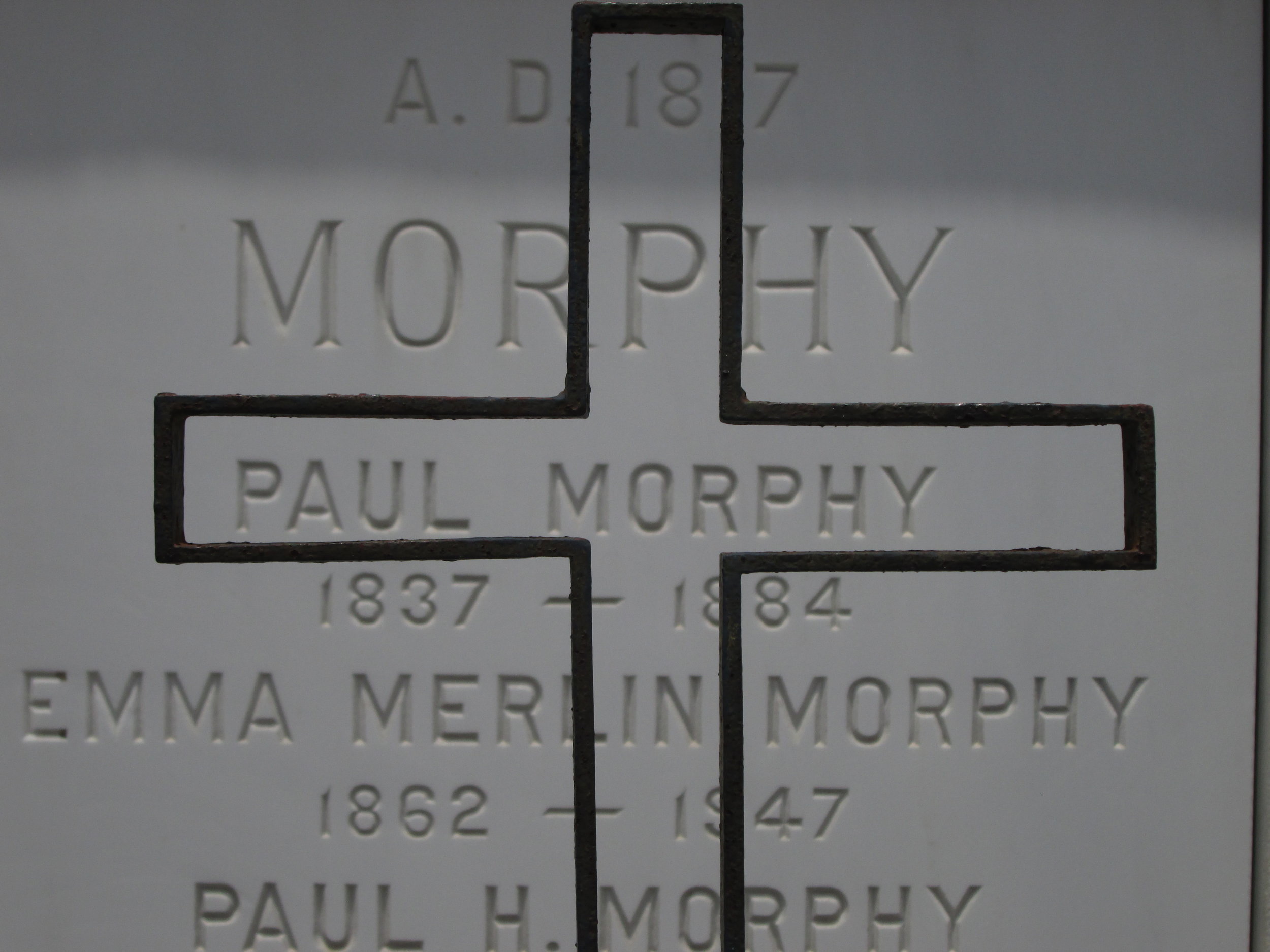New Orleans: where the air is sticky with the promise of summer rains, the buildings flaunt their exposed brick and plastered facades, and the city sings with the easy living of its residents. It's a city we've explored for only a week, but it has slowly arrested a fondness in my heart with its character and charm.
The presence of living history is stronger here than it was in Grand Isle. The city emanates an atmosphere of old money, old traditions and cultures, and old historical moments that influence the lives of its residents every day. We wandered through the French Quarter, the Garden District, Uptown, Downtown, the Tremé, and Congo Square... places with a past permeated with colonization, reconstruction, and the memory of slavery. There is a sense of innovation here, as well: skyscrapers in the business district, tourist attractions, and modern appliances just as there are in any other city. The past mingles with the present and the future to create an environment brimming with historical progress and a charming atmosphere all its own.
Interview with the Vampire captures the timelessness of New Orleans. Vampires Louis and Lestat prowl the damp streets seeking out victims for their dark hunger, the swamp air thick with the buzz of insects and the stench of rot; next to the refineries of Creole society from the late 18th to early 19th centuries, the city reeks of the supernatural and presents a perfect environment for creatures of the night to stalk their prey. The sensuous imagery Anne Rice provides in her novel provided a perfect perspective on New Orleans' interaction with death and the afterlife. Following the footsteps of vampires adds a sense of supernatural adventure to our explorations here so far, especially wandering around the cemeteries.
“Interview with the Vampire captures the timelessness of New Orleans. ”
We hit many stops on our tour through the supernatural. We learned about the religion of Voodoo and its origins in African culture, and how it still has a place in the community with its superstitions and blessings. The aboveground tombs of the St. Louis Cemetery held an atmosphere of an ominous peace, and one had the feeling of being watched by the angel statues towering from the massive mausoleums where the wealthy laid their dead a hundred years ago.
Seeing as the city has perpetually dealt with decay - the houses rotting from the slow destruction of the tropical Gulf Coast climate, and the economic structure of the South completely transforming after the Civil War - it's easy to see the charm of ghosts and hauntings. The role of the vampire, bringer of death to the citizens of New Orleans, is associated with the natural death of the landscape; the lens becomes murky and desolate, and one may see the city as a creature clinging to life in every way possible.
Yet there is life here, perpetual life, a heartbeat thrumming down the city streets and fighting past the storm clouds to find the sunny day. There is life in every jazz trumpet blowing from the live music bars; there is life in the spray of powdered sugar over a warm plate of beignets; there is life in the rain that breaks over the city like a baptism to release the city of its stagnant air. There is life in New Orleans alongside the celebration of death, and it is a life worth living when seen through the eyes of those who appreciate it most.
Cray Adams, local musician, plays "Saint James Infirmary" for us in Congo Square, a park known historically as a place where slaves congregated on their days off to trade, dance, and celebrate their cultures.

